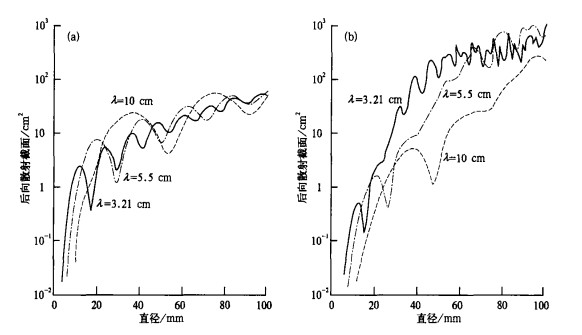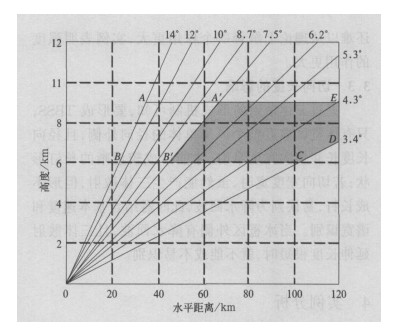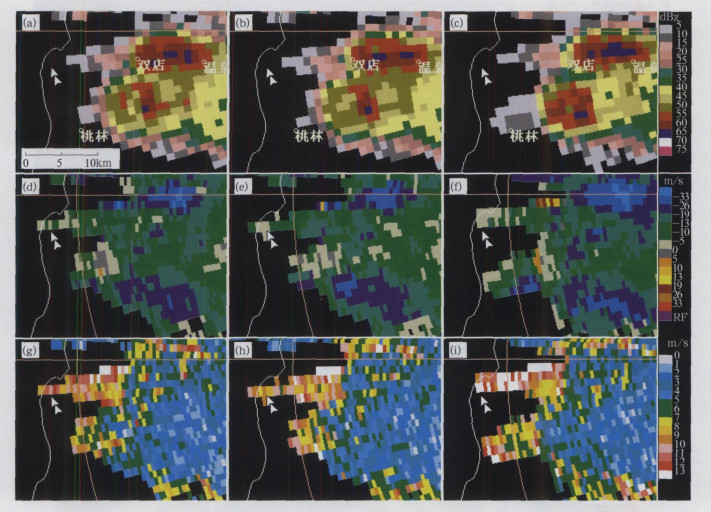摘要:
该文从干冰球和水球的散射特征出发, 分析了强烈雹暴三体散射的多普勒天气雷达基本反射率因子的形成机制, 讨论了影响三体散射观测的主要因素; 利用连云港CINRAD/SA天气雷达资料, 对2004年6月26日发生在连云港市境内的一次大冰雹过程的三体散射特征进行了详细分析, 并对三体散射在业务上的应用进行了探讨。结果表明:产生三体散射的反射率因子区强度超过60 dBz, 三体散射的反射率因子值小于18 dBz, 长度通常小于14 km; 径向速度整体上为朝向雷达的低值, 谱宽很大, 可达13 m/s以上; 首次观测到三体散射后, 可立即预报有大冰雹将降落到下游地区, 提前量在20 min以上, 这些结果为利用三体散射预报冰雹提供了新的线索。
Abstract:
Based on the scattering characters of dry ice-ball and water-ball, the formation mechanisms of three-body scattering and the major factors determining its shape and size of strong hail-storm are discussed. A three-body scattering hail-storm case occurrs on the 26th June 2004, is analyzed by means of Lianyungang S-band Doppler weather radar data, and the application of TBSS (three body scattering spike) in operational hail warnings is studied. The results show that: for dry ice-ball and water-ball, the backwards scattering ability is stronger with longer diameter. The backwards scattering ability of the large hails is much stronger than the raindrops and the small hails. Three-body scattering is caused by the hail-storm's lateral scattering of radar wave to the ground, the scattered by the ground surface to the hailstorm again, and the hailstorm scatters the radar wave back to radar. The main factors influencing the three-body scattering observation include the position and intensity of the hail-storm, radar elevation, and the characteristics of the underlying surface. The best radar elevation to observe three-body scattering are 4.3°, 5.3°and 6.2°. But the three-body scattering can be observed from all radar elevations under a certain conditions. The distance between the three-body scattering and 60 dBz strong reflection region depends on the intensity of the strong reflection region, radar elevation and underlying surface characteristics. The "long spike" appearance depends on the ratio of radial length and tangential length of the strong echo region. The three-body scattering can last more than 1 hour for the base reflectivity, radial velocity and spectrum width. To produce TBSS, the intensity of reflectivity core must be larger than 60 dBz. The intensity of three-body scattering spike is less than 18 dBz, its length is usually less than 14 km, radial velocity is very low, towards the radar direction, its spectrum width can be over 13 m/s. The TBSS is clearer in spectrum width and velocity than in reflectivity maps. When the three-body scattering at the upper air is the strongest, the falling hail of the surface is not always the strongest. The large hails descend to the ground when the threebody scattering weakens suddenly. The highest altitude of the three-body scattering is at 11.8 km with the corresponding temperature of -45 ℃ in the target case. The spectrum width can show the real size of the TBSS, for TBSS has a much higher spectrum width than the real storm, while the TBSS on reflectivity or velocity maps can be partly obscured by the real storms. When the TBSS is first identified, large hail can be predicted in downstream area over 20 minutes. These results provide a new clue for forecasting the hail based on TBSS.


 设为首页
设为首页 加入收藏
加入收藏



 下载:
下载:







